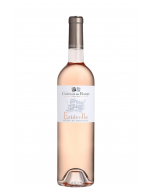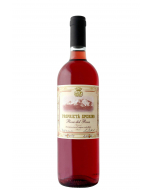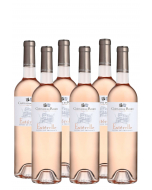Sipping Pretty in Pink: Fascinating Facts About Rosé Wine

Rose wine, the quintessential summer drink is a favourite drink of many. Wine enthusiasts not only like to enjoy it on a warm summer day but they also know how to pair the delicious drink with a sumptuous meal. And, there’s more to the drink than just its delightful flavours and enchanting hue. Here, we have mentioned about 10 fascinating facts about rose wine that will deepen your appreciation for the alluring varietal:
Varied production methods
Rosé wine can be made through various methods, each imparting distinct flavours and characteristics. The two primary methods are maceration (leaving the grape skins in contact with the juice) and the saignée method (bleeding off a portion of juice from red wine production). The choice of method contributes to the final wine's colour and taste.
Colour palette
Rosé wines come in an array of colours, from pale salmon to vibrant ruby. The hue is influenced by factors such as grape variety, skin contact time, and winemaking techniques. A lighter colour often suggests a lighter, crisper taste, while a deeper hue might indicate bolder flavours.
Versatile grape varieties
Many different types of grapes can be used to make rosé wine. These grapes, like Grenache, Syrah, Mourvèdre, Pinot Noir, Sangiovese, and Merlot, bring a variety of flavours to the wine. You can taste hints of red fruits like strawberries and raspberries, as well as floral and citrus notes.
Globetrotting Rosés
Rosé wine is not limited to any specific region. While it's often associated with the Provence region in France, rosé production has gained momentum globally, with notable varieties hailing from places like Spain, Italy, the United States, and even Argentina.
Popularity Surge
Over the last decade, the popularity of rosé has soared, leading to the coining of the term "rosé revolution." Millennials, in particular, have embraced rosé for its approachability, making it a go-to option for those new to wine.
Food Pairing Perfection
Rosé's acidity and diverse flavour profile make it a versatile companion to a wide range of dishes. It pairs wonderfully with salads, seafood, light pasta dishes, and even barbecue fare, making it a staple for outdoor gatherings.
Serving Temperature Matters
Serving rosé at the right temperature can significantly enhance your tasting experience. While it's often served chilled, slightly warmer temperatures can help unlock the wine's aromas and flavours.
So, the next time when you will uncork a bottle of rose, take a moment to savour the complexities and stories held within the delicate pink drink in your glass. Cheers to the world of rose!





